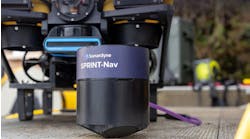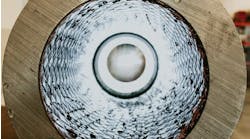OTC 2014: EOR, seismic imaging, HP/HT lead the way for BP’s R&D
Offshore staff
HOUSTON – BP is using the 2014 Offshore Technology Conference as a venue to emphasize its areas of technological emphasis and advancements pertinent to offshore oil and gas exploration and development.
High among these areas of importance to BP are its work in enhanced oil recovery (EOR), seismic imaging, and high-pressure/high-temperature (HP/HT) drilling and production.
On the enhanced oil recovery front, BP points in particular to LoSal as a new addition to the traditional gas and chemical recovery techniques. LoSal, or low salinity, is injection water treated to reduce the total dissolved solids from seawater’s typical 35,000 ppm down to a few thousand parts per million. The process also targets a reduction in the total divalent ion concentration to a point below that of the connate reservoir water. These two steps combine to help release the formation oil from the reservoir rock surfaces.
In the same arena, BP is using a Micro-CT scanner to develop 3D images of the architecture within rocks taken in coring. The data from these images can be used to generate image-based simulations. One significant advantage is that the imaging can be done in a matter of a couple of weeks where it can take three to six months to get the same information using traditional laboratory methods.
On the seismic imaging front, BP is using novel data acquisition techniques such as independent simultaneous sourcing and data processing in its recently opened high-performance computing center. BP is developing these technologies with the aim of getting better seismic data and resulting images more quickly and at a lower cost than with traditional systems.
The HP/HT R&D is being done under an umbrella effort referred to as Project 20K. This refers to the target of 20,000 psi (138 MPa) for reservoir pressures and to 350°F (177°C) for temperatures. The project is looking at four separate areas of focus, well designs/drilling and completions; rig/riser/BOP equipment; subsea production systems; and intervention and containment.
An ongoing development tagged BP Well Advisor also is in progress. Well Advisor is to become a comprehensive real-time well operation monitoring system with a number of consoles devoted to specific drilling operations. Currently in the field are consoles for casing and cementing. By the end of this year, BP expects to roll out consoles for pressure testing, BOP monitoring, and rig-site fluid management. Next year is to see the last three consoles – ROP, drilling operations, and tripping.
With Well Advisor, BP says everyone involved in the drilling process will see the same data and the same set of progress notes at the same time which should lead to better and quicker reactions to dynamic drilling conditions as they occur.
5/6/14


